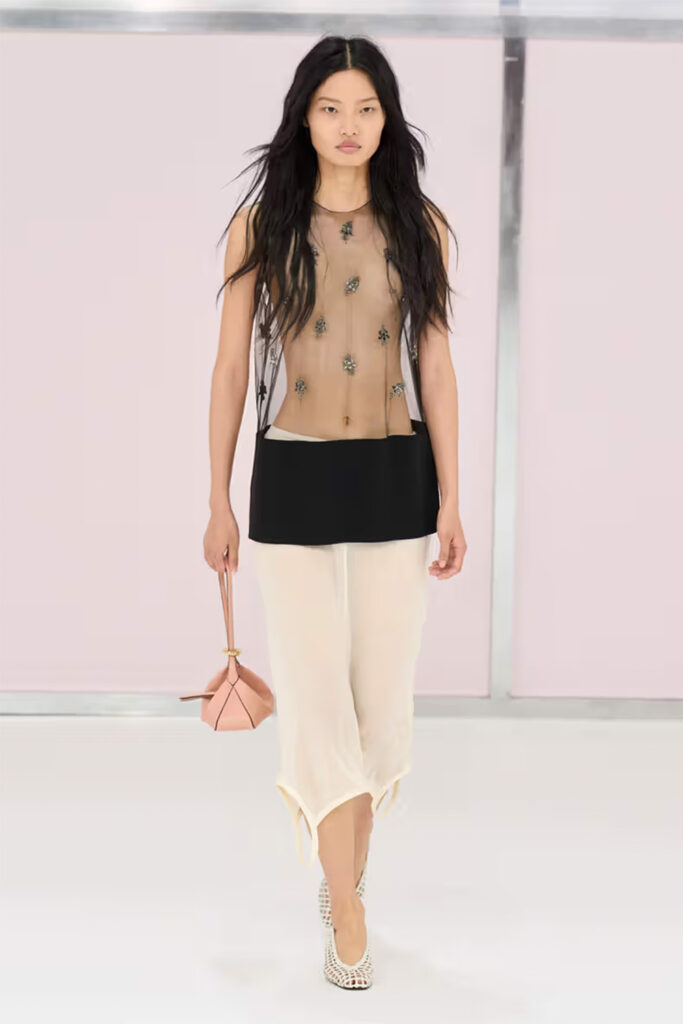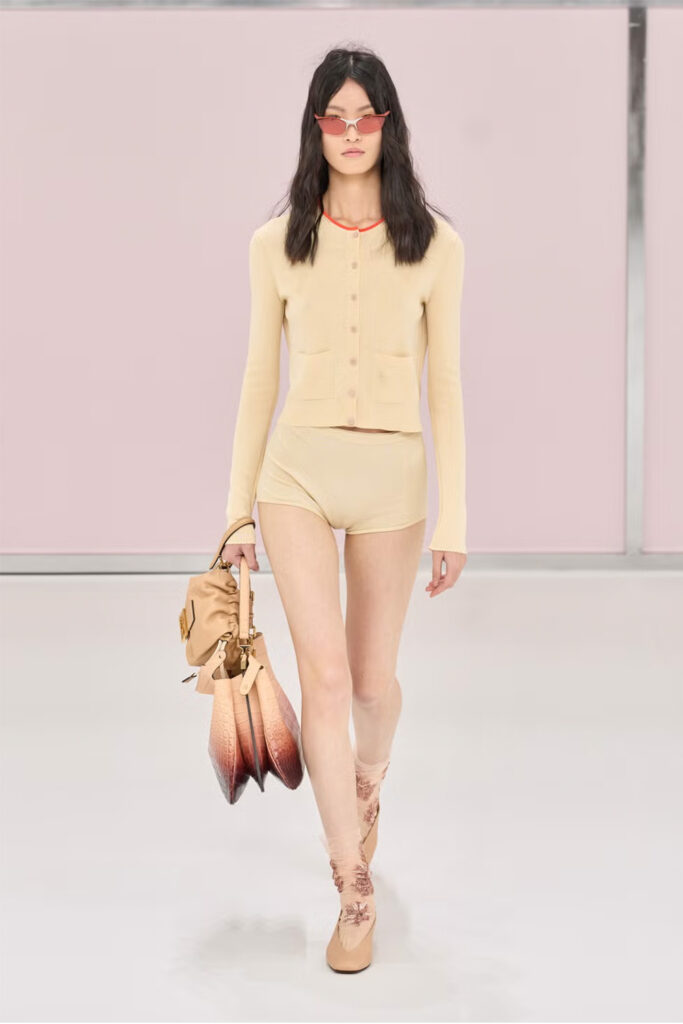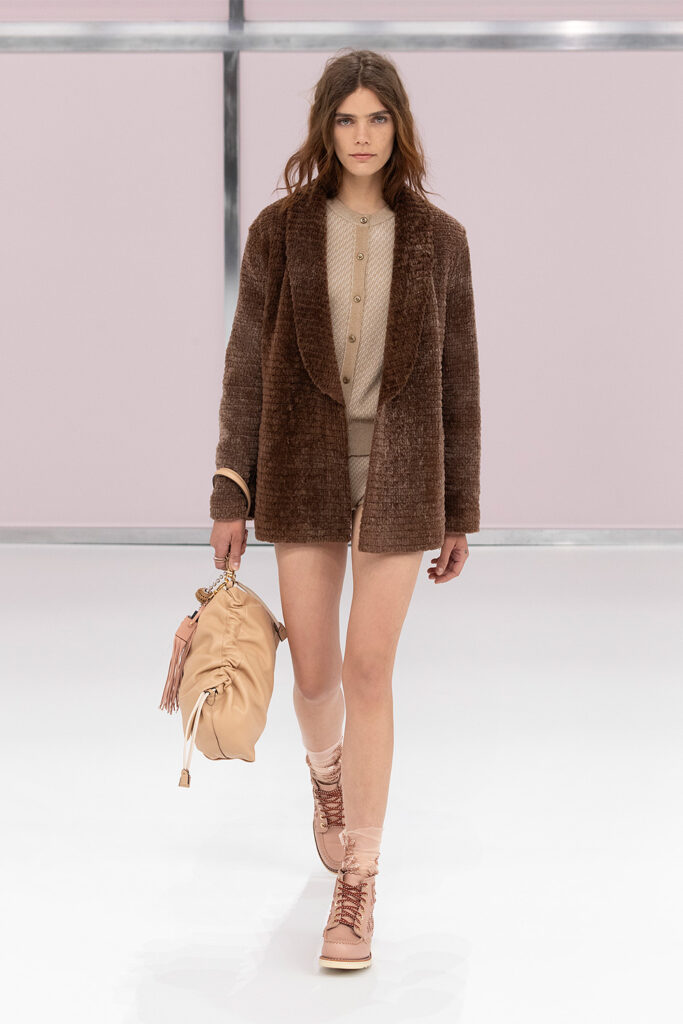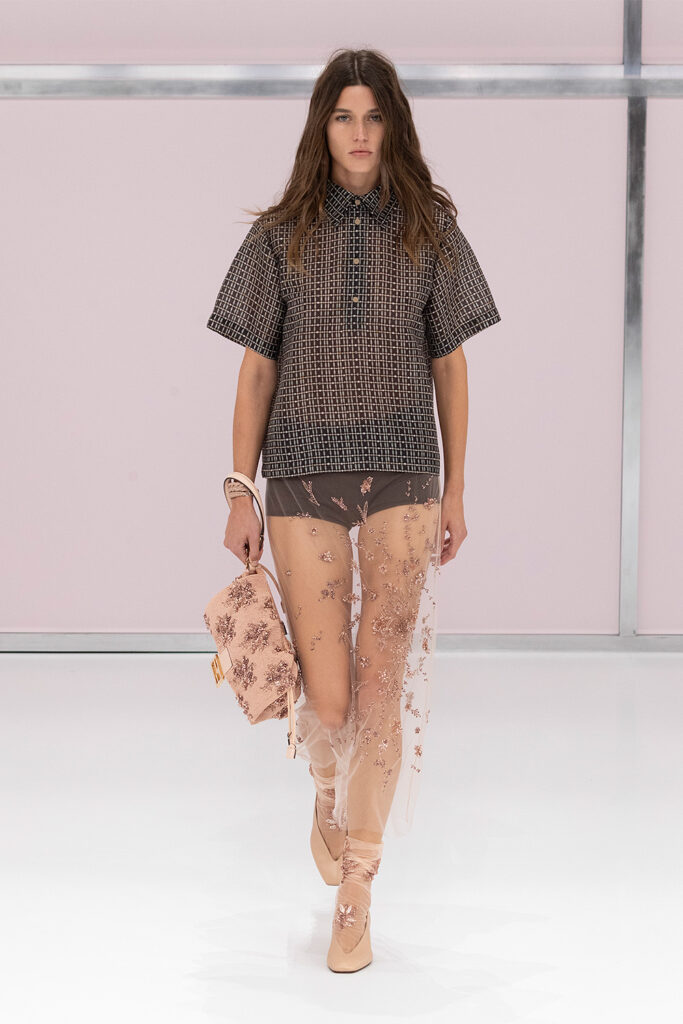“The foundations of how women dress today and, in many ways, how we think are in the 1920s. It’s about modernity in style and attitude,” says Kim Jones, Artistic Director of Couture and Womenswear, on the FENDI Spring/Summer 2025 collection.
This mantra fuelled the collection and was used as a reference point to build designs rooted in tradition and history. FENDI’s founding year was 1925; however, as Jones mentioned in the show notes, there was more to the 1920s than that breakthrough. Greater cultural and design elements cemented the era as aesthetically monumental.
For example, the International Exhibition of Modern Decorative and Industrial Arts in Paris occurred, and literary classics like Virginia Woolf’s Mrs Dalloway and F. Scott Fitzgerald’s The Great Gatsby were published. “We approached the collection with these things in mind, as an amalgam of epochs, moods and techniques — then and now,” Jones shared.
Unveiled at Milan Fashion Week, the collection looks forward and back through FENDI’s history to emphasise wearability (while honouring the 100-year milestone). Specifically, it features pieces that allow the wearer to actually exist within the clothes, encouraging movement rather than merely existing as a commodity. The clothes were tailored for movement, lightness, and ease-one where clothing can coexist
with contemporary living.
When it comes to the designs itself, the embroideries and textures took centre stage. Hand-stitched embroideries were detailed and found on tees, silk, and organza. Soft suedes and shearlings took robe shapes, while silk tea dresses and breezy dancer slips were built to mirror the silhouettes and motifs that hallmarked the 1920s.
With a connecting thread of lightness fusing the collection together, art deco flapper-style dresses coupled with sheer and crystal detailing were juxtaposed against more casual silhouettes like robes, trench coats, and loose-fitting trousers, offering an array of possibilities.
Despite the bags’ effortlessness, they ironically require a great deal of effort and supreme craftsmanship. Iconic pieces like the Mamma Baguette are reimaged with a softened construction. These features are a tribute to Adele Fendi, the house’s founder and Silvia Venturini Fendi’s grandmother.
The goal was to link the past, present, and future while honouring the women who composed the brand’s identity. The house was iconically passed down through the matriarchal line, and female energy fuelled the brand’s creativity. In passing from generation to generation, quality was a feature that stood the test of time.
“Quality is the number one point besides the beauty of design. I am always thinking about the connection between fashion and time – I think quality is the defining feature,” says Silvia Venturini Fendi, Artistic Director of Accessories and Menswear at FENDI.
“It is the timeless testament to what has been achieved in our hundred-year history. As the founder of FENDI, it was also my grandmother Adele’s obsession, both personally and professionally: quality.” Venturini Fendi says.










